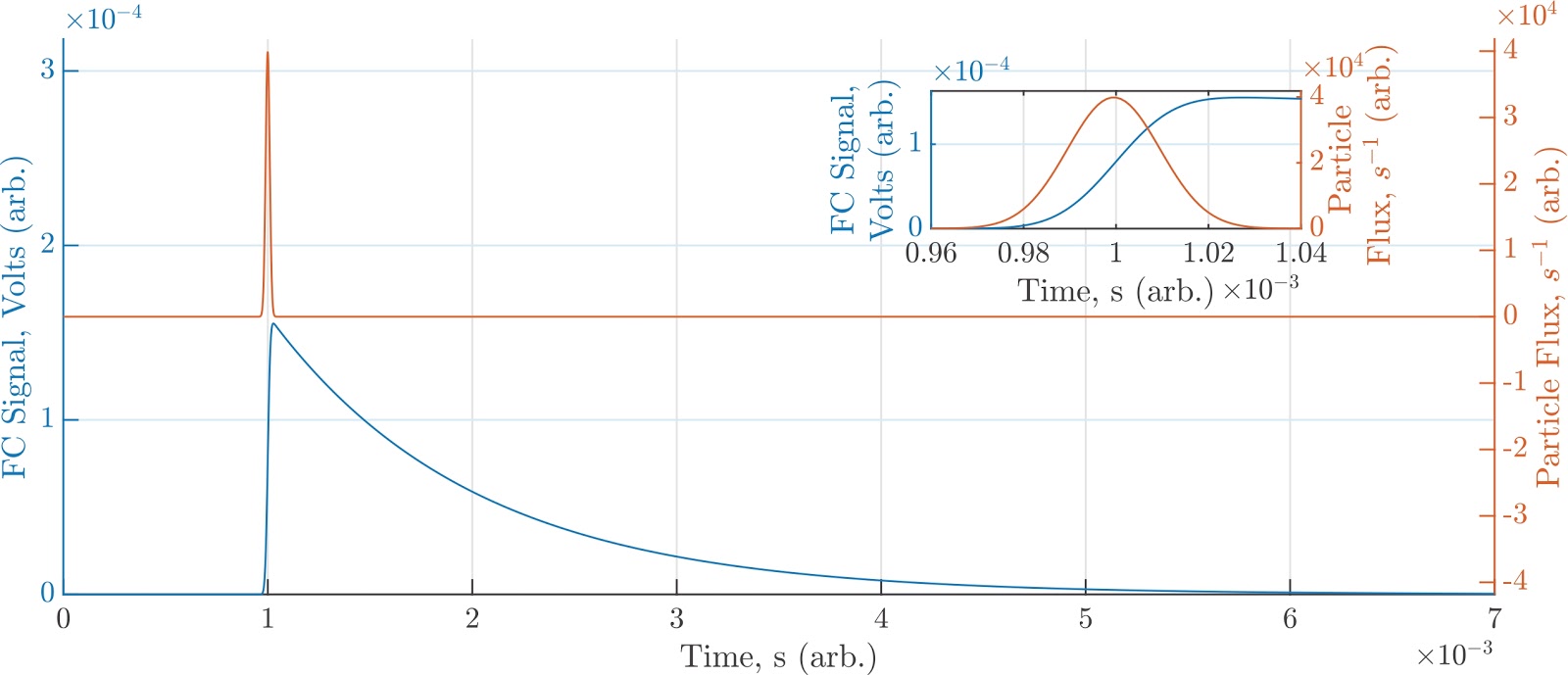We use a Faraday cup to measure the total number of particles in our electron and positron plasmas. The plasmas are “dumped” onto the cup, thereby generating a voltage on the cup relative to the total charge of the plasma (and the capacitance of the cup).
The signal is small, on the order of millivolts, so it is then amplified by a factor of about one thousand. Faraday cups are reliable and easy to calibrate to an accuracy of few percent. However, the signal becomes increasingly noisy below about one million particles.

The orange line uses the right hand side y-axis and the blue line uses the left hand side y-axis. The x-axis is time, the scale in this example can be ignored. The orange line is the rate of particles colliding with the Faraday Cup surface, it takes roughly 1 ms for particles to arrive at the surface from when we start measuring (this timing varies depending upon your experiment). The blue line shows the voltage signal we measure from the Faraday Cup. Notice how the voltage continually increases as the particles are arriving and once the orange line is zero the voltage starts to decay.
The top right shows a zoomed in version of the same graph, showing more clearly how there is a direct relationship between the arrival of charged particles and the rising Faraday Cup voltage.
